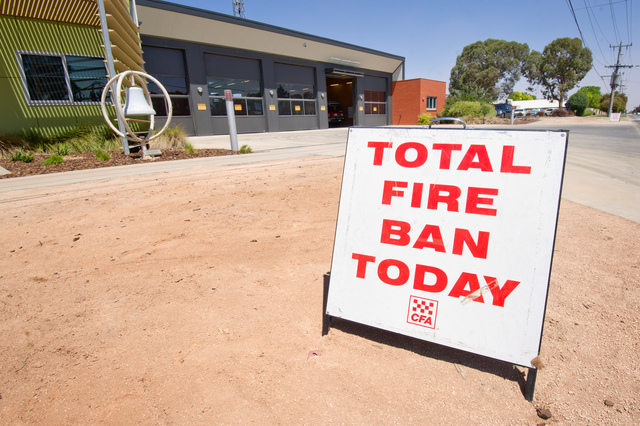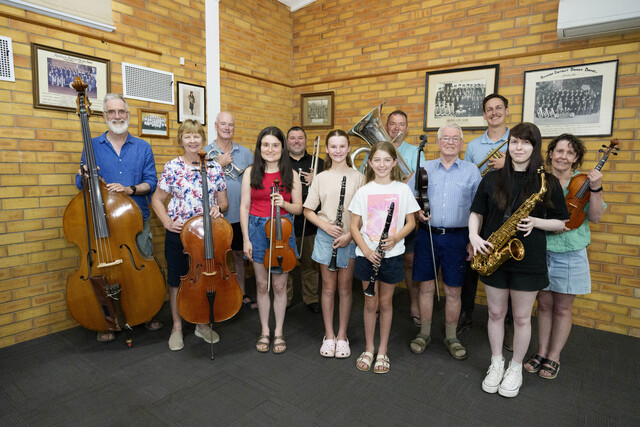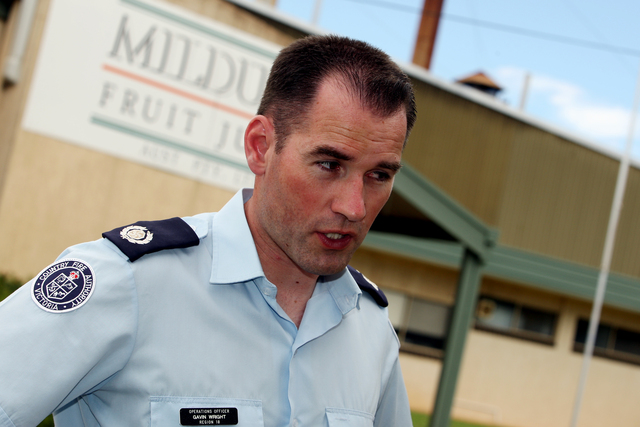BOB Walton still giggles like the cheeky boy he was back in the early 1950s.
In those days, as part of the “Heron Street gang”, the now 79-year-old would sneak into the “palatial” (and unoccupied) Rio Vista House with his young mates.
It had been the home of Mildura pioneer family the Chaffeys for six decades until the death of William Benjamin Chaffey’s second wife, Hattie, in 1950 when Mildura City Council bought it.
But, like most curious young boys, Mr Walton and his mates found a trap door to get in the house in the years before Mildura’s council converted it to an art gallery in 1956.
“In the early 1950s, this was our playhouse. I used to live just around the corner from here,” he said, before whispering during a tour of historic Rio Vista House this week, “we used to sneak in through a trap door down below”.
“I’ll show you where it is when we head down to the basement.”
Mr Walton, a respected local historian who educates schoolchildren about Rio Vista and the Chaffeys, remembered the spiritual birthplace of Mildura as “very dark and dank” during this post-war period.
“But we used to climb in and go up the stairs. It still felt like a palace to us,” he said.
“We wouldn’t have damaged it in any way. But during that time, between 1950 and 1956, the house was vandalised and the council had to put in guards to try to protect it.
“I remember one day we came in and there was a big bark and a very large Alsatian dog came around the corner so we got out of there very quickly.”
As we kicked off the main part of the tour, Mr Walton, ever the character, said there was one main rule to follow.
“Don’t creak the stairs,” he cheekily said as we started walking up the grand staircase, made of cedar and blackwood, breaking this rule immediately.
Mr Walton just laughed and said the stairs “creak like my knees”.
He said that Hattie Chaffey “hated the stairs” in Rio Vista.
“She preferred to use the servants’ stairs, because she didn’t like the creaking,” said Mr Walton, who was awarded the Medal of the Order of Australia last year for his contribution and service to the community and education.
“And after W.B. passed away in 1926, his jokes with the (eight) children about the creaking on the stairs reminded her too much of him.
“Plus, she didn’t want a disconnect with the servants. They were one household.”
Picking up the point of the servants’ role in the Chaffey household, I asked him if it was like a British upstairs-downstairs arrangement.
“Funny you say this, because there was quite a different relationship to that,” Mr Walton said.
“Many of the servants were in fact family friends. It wasn’t quite like the British way and the aristocratic relationships.
“Quite often the servants didn’t get paid; instead, they got board and accommodation during the hard years for the Chaffeys.
“When the Governor of Victoria (Sir George Clarke) dined at Rio Vista in 1901, they couldn’t afford servants so a group of the ‘Friends of Mildura’ said, ‘We’ll help you and dress up as waiters and we’ll wait on the Governor’.”
As we approach the ground-floor dining room, he pointed out a Japanese screen near the entrance from the kitchen.
“That is where the servants would come in and walk around the screen so the diners couldn’t see where they were coming from,” Mr Walton said.
Asked who the most famous diners were in the house after the Chaffeys first occupied it in 1892, he said: “Well, they entertained governors, politicians and other kinds of important people in here.
“Aside from the Governor of Victoria, big business families like the Bowrings and Williamses would be here for dinner parties.
“Hattie Chaffey was a beautiful pianist and she used to have ‘at-homes’ every month, when she’d have all her friends over. She’d play and they’d have a sing-along and afternoon tea.
“My aunt actually ran a bakery shop in Langtree Avenue – Chapman’s Bakery – and Hattie used to buy all her cakes from that little shop for her afternoon teas.”
Other ports of call during our tour of Rio Vista – which means “river view” in Spanish – included the smoking room, near the grand entrance and magnificent stained-glass windows.
“The gentlemen met here and probably little bit of a tipple because W.B. Chaffey had wineries in the region,” Mr Walton said.
“He had one at Irymple – called Chateau Mildura – and that’s the original winery. It’s still in operation and is now a boutique winery and a wine museum.
“And then they built a new one out at Merbein, which became Mildara and then Mildara Blass. At one stage this was the largest winery in the southern hemisphere.
“The desk is the original one in the smoking room. The marble fireplace in here – and there’s another one like it in the main bedroom upstairs – is just magnificent.”
Before we made our way across the entrance to the drawing room, named “because they drew a curtain across”, he pulled out another interesting anecdote about W.B. Chaffey.
“In 1911, W.B. Chaffey used to ride his son’s bike all around the town. He’d work 20 hours a day and hardly stopped,” Mr Walton said.
“In that year, the people of Mildura bought him a brand new Ford T-model in appreciation for all the work he’d done for the town. It was a measure of how the people saw him.”
We finished the tour upstairs looking at the five rooms, including the main bedroom of the Chaffeys, which has been beautifully restored, as well as the bathroom next to it.
“There were eight Chaffey children, and Mr and Mrs Chaffey would bath in the marble bath once a week, along with the children,” Mr Walton said.
“They would, of course, have regular sponge baths but W.B. would be the first one to have a bath and you can imagine how dirty the water would be after the children had all bathed.”
I did eventually get to see the trap door that Mr Walton cheekily entered the house as a boy. It’s near the basement, which now has a fine artwork display in it.
Mr Walton said the basement level was designed as a ballroom, complete with sprung floor to give dancers a “floating feeling” before it was remodelled.
By the end of the tour, it was clear just how deep Mr Walton’s connection to Rio Vista runs.
It begged the question: what does the state and national heritage-listed house mean to him?
“It’s part of my childhood. I couldn’t believe that anyone could live in such splendour,” he said.
“When I tell children about it, I can give them first-hand accounts of it.
“Many people who live locally don’t know about the rich history of this site or the Chaffeys.
“But the house represents the solidarity of Mildura. W.B. Chaffey meant it to be that way.”
For more information on visits to Rio Vista and the history of the house, visit milduraartscentre.com.au.








